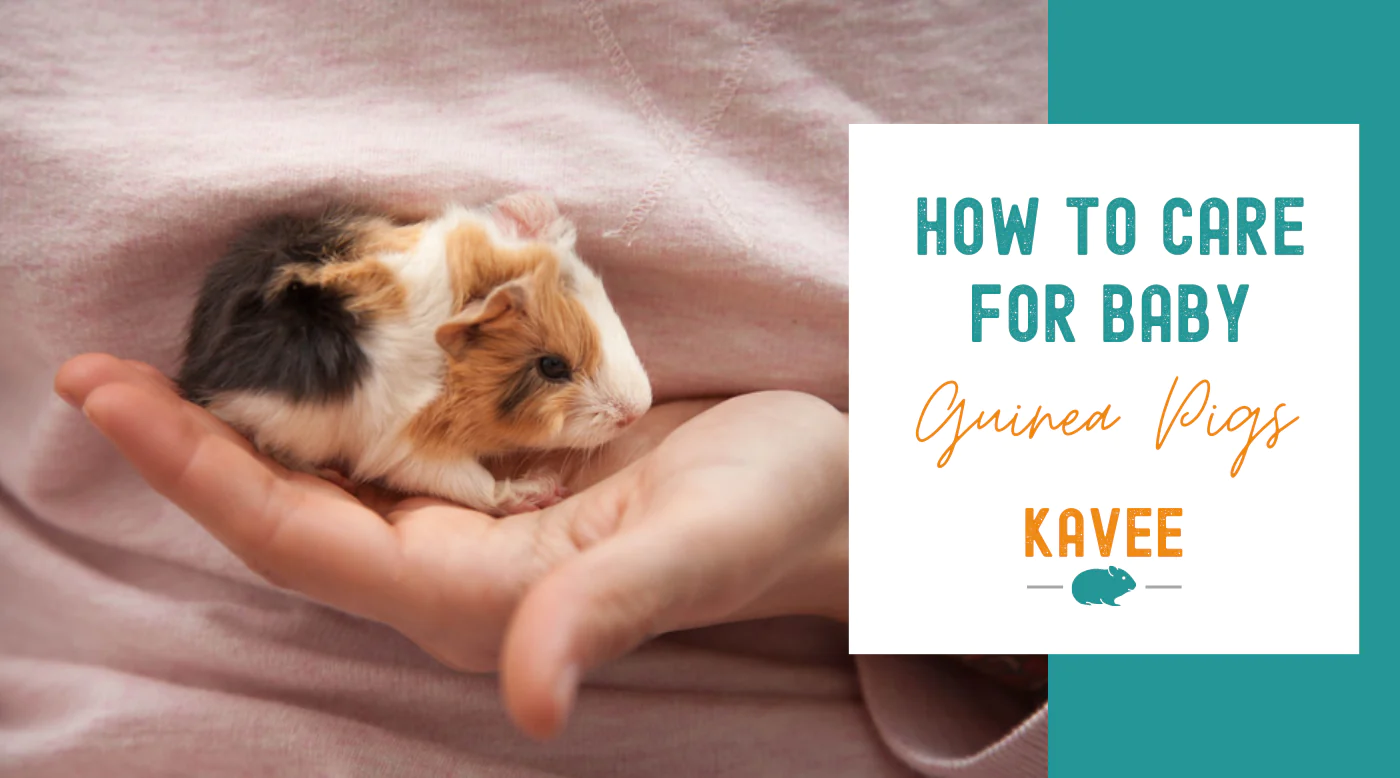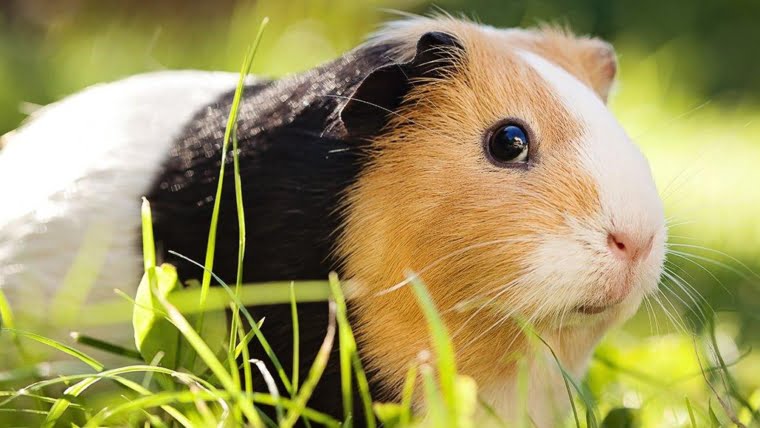Raising and Caring for Baby Guinea Pigs
Key Takeaways:
- Understanding the lifecycle stages of baby guinea pigs is crucial for providing appropriate care at each developmental milestone.
- Baby guinea pigs exhibit distinct physical and behavioral characteristics that evolve as they grow and mature.
- By recognizing these unique traits, caregivers can tailor their care routines to meet the specific needs of their young pets.
Brief overview of guinea pigs as pets: Guinea pigs, also known as cavies, are popular small pets known for their gentle demeanor and sociable nature. They come in various breeds, coat types, and colors, making them attractive companions for pet lovers.
Understanding baby guinea pigs’ unique needs and characteristics is crucial for providing them with proper care and ensuring their well-being. Baby guinea pigs have specific requirements distinct from adult guinea pigs, and being aware of these differences is essential for their health and development.
Purpose of the article: This article provides comprehensive guidance on raising and caring for baby guinea pigs. It aims to educate readers about the distinct aspects of baby guinea pig care, including their growth, nutrition, socialization, and health needs. By offering valuable insights and practical tips, this article aims to help new and experienced guinea pig owners provide the best care for their young pets.

Understanding Baby Guinea Pigs
A. Definition: What qualifies as a baby guinea pig? Baby guinea pigs, often called “pups,” are typically considered as such from birth until they reach sexual maturity, which is around 4 to 6 weeks of age. During this period, they exhibit specific physical and behavioral traits characteristic of their young age.
B. Lifecycle stages: From birth to maturity, Baby guinea pigs undergo several developmental stages. These stages include birth, infancy, adolescence, and adulthood. Each stage comes with its own set of physical and behavioral changes and unique care requirements.
C. Physical characteristics and development milestones Baby guinea pigs are born with open eyes, fully furred, and capable of moving around shortly after birth. However, they are still delicate and require maternal care for warmth and nutrition. As they grow, baby guinea pigs will go through growth spurts, gaining weight and developing muscle mass. Their fur may also change color or texture during this time. Vital developmental milestones include the ability to eat solid food, the growth of incisor teeth, and the development of social behaviors.
D. Behavioral traits unique to baby guinea pigs exhibit distinct behavioral characteristics that distinguish them from adults. They are often more curious, energetic, and playful than their older counterparts. They may engage in exploratory behaviors, such as nibbling and climbing, as they discover their environment. Additionally, baby guinea pigs rely heavily on their mother and littermates for social interaction and comfort, displaying behaviors such as snuggling and vocalizing to communicate their needs. Understanding these unique behavioral traits is essential for providing appropriate care and enrichment for baby guinea pigs.
Care Requirements
A. Housing: Suitable cages and environments for baby guinea pigs
Baby guinea pigs require a safe and spacious environment to thrive. Opt for cages with solid flooring to prevent injury to their delicate feet. Ensure the cage has ample ventilation and space for exercise. Provide bedding materials like hay or paper-based bedding to comfort and encourage natural burrowing behaviors. Additionally, it includes hiding spots and toys for mental stimulation.
B. Nutrition: Dietary needs and feeding schedules
Baby guinea pigs have specific dietary requirements to support their growth and development. Offer unlimited access to fresh Timothy hay to aid digestion and provide essential fiber. Introduce high-quality guinea pig pellets formulated for young cavies, ensuring they contain adequate levels of vitamin C. Supplement their diet with fresh vegetables daily, such as leafy greens and bell peppers. Always provide clean, fresh water in a shallow dish or sipper bottle. Monitor their food intake and adjust portion sizes as they grow.
C. Hygiene: Importance of cleanliness and grooming for baby guinea pigs
Maintaining a clean living environment is crucial for the health and well-being of baby guinea pigs. Spot-clean the cage daily to remove soiled bedding and uneaten food. Perform a thorough cage cleaning at least once weekly, replacing all bedding and washing food and water dishes with mild soap and water. Monitor their fur for any signs of matted fur or fecal buildup, and gently groom them with a soft brush if necessary. Trim their nails regularly to prevent overgrowth and discomfort.
D. Health considerations: Common ailments and preventive care
Baby guinea pigs are susceptible to various health issues, including respiratory infections, parasites, and dental problems. Monitor their behavior and appearance for signs of illness, such as lethargy, loss of appetite, or abnormal discharge. Schedule regular check-ups with a veterinarian experienced in exotic pet care to assess their health and address any concerns. To ensure they remain healthy and happy, preventive care measures, such as regular vaccinations, parasite control, and dental exams, must be provided.
:max_bytes(150000):strip_icc()/skinny-guinea-pig-baby-858152302-0332f3a9e52148ddbc7d9c9c41e5b0ca.jpg)
Socialization and Interaction
A. Bonding with human caregivers: Building trust and familiarity
Baby guinea pigs benefit greatly from positive interactions with their human caregivers. Spend time with them daily, talking to them softly and offering treats to associate your presence with positive experiences. Approach them gently and avoid sudden movements to build trust and familiarity. Allow them to explore your hands and lap at their own pace, offering gentle strokes and scratches to reinforce bonding.
B. Interaction with adult guinea pigs: Introducing baby guinea pigs to their peers
Ensure a gradual and supervised introduction process when introducing baby guinea pigs to adult companions. Begin by placing the cages side by side to familiarize them with each other’s scent and presence. Supervise their interactions closely during supervised playtime in a neutral area, such as a giant playpen. Watch for signs of aggression or dominance and separate them if necessary. With time and patience, they will establish harmonious relationships and enjoy companionship.
C. Playtime and enrichment: Stimulating activities for baby guinea pigs
Baby guinea pigs are naturally curious and playful, providing plenty of enrichment and stimulation opportunities. Please set up a variety of toys and tunnels in their cage to encourage exploration and physical activity. Offer safe chew toys made of wood or cardboard to help satisfy their natural chewing instincts and promote dental health. Rotate their toys regularly to keep them engaged and prevent boredom.
D. Handling tips: Safely handling and cuddling baby guinea pigs
When handling baby guinea pigs, approach them calmly and support their bodies with both hands to provide security. Lift them gently and avoid squeezing or restraining them tightly. Hold them close to your chest to help them feel secure, and speak to them soothingly to reassure them. Limit handling sessions to short durations at first, gradually increasing the length as they become more comfortable with being held. Always supervise children when handling baby guinea pigs to ensure gentle and appropriate interaction.
Growth and Development
A. Growth rate: Typical milestones in the growth of baby guinea pigs
Baby guinea pigs experience rapid growth during their first few months of life. They typically double their birth weight within the first week and continue to gain weight steadily after that. By three weeks of age, they begin to explore their surroundings more actively and may start sampling solid food. By six to eight weeks, they are considered juveniles and have reached a significant portion of their adult size, although they will continue to mature and develop for several more months.
B. Sexual maturity: Signs of reaching adulthood and considerations for breeding
Guinea pigs reach sexual maturity at around 4 to 6 weeks of age. However, it’s advisable to wait until they are at least 3 to 4 months old before considering breeding to ensure they are physically and emotionally mature enough. Signs of sexual maturity in male guinea pigs include the development of testicles and increased territorial behaviors. At the same time, females may exhibit signs of estrus, such as mounting or aggressive behavior. Responsible breeding requires careful consideration of genetics, health, and housing accommodations for both the parent and offspring.
C. Behavioral changes: Transitioning from babyhood to adolescence
As baby guinea pigs transition into adolescence, they may exhibit changes in behavior as they assert their independence and establish their social hierarchy. They may become more vocal and assertive, particularly during peer interactions. It’s essential to provide mental and physical stimulation opportunities to prevent boredom and frustration during this stage. Positive reinforcement and consistent handling can help reinforce good behaviors and strengthen the bond between guinea pigs and their caregivers.
D. Long-term care adjustments: Adapting care routines as guinea pigs mature
As guinea pigs mature, their care needs may evolve, requiring adjustments to their diet, housing, and social interactions. Monitor their weight and activity levels regularly to ensure they maintain a healthy lifestyle. Consider providing additional space or enrichment activities to accommodate their growing size and energy levels. Pay attention to any changes in behavior or health and consult with a veterinarian to address any concerns promptly.
Common Challenges and Solutions
A. Health issues: Recognizing signs of illness in baby guinea pigs and seeking veterinary care
- Monitor baby guinea pigs closely for signs of illness, including lethargy, loss of appetite, diarrhea, sneezing, or discharge from the eyes or nose.
- Seek veterinary care promptly if you notice any concerning symptoms, as baby guinea pigs can deteriorate quickly if left untreated.
- Ensure regular veterinary check-ups to monitor their health and address any underlying issues early on.
B. Behavioral concerns: Addressing anxiety or aggression in baby guinea pigs
- Provide a safe and comfortable environment for baby guinea pigs, minimizing stressors such as loud noises or sudden movements.
- Implement positive reinforcement techniques, such as offering treats and praise, to encourage desirable behaviors and build trust.
- If aggression or anxiety persists, consult an experienced veterinarian or animal behaviorist for guidance on behavior modification techniques.
C. Environmental factors: Adjusting housing and care practices based on seasonal changes
- Provide additional bedding and shelter to keep baby guinea pigs warm and comfortable during colder months.
- In warmer weather, ensure adequate ventilation and access to shade to prevent overheating.
- Monitor temperature and humidity levels regularly and make necessary adjustments to maintain a comfortable living environment.
D. Socialization difficulties: Strategies for integrating shy or solitary baby guinea pigs
- Gradually introduce shy or solitary baby guinea pigs to companions in a neutral environment to minimize stress.
- Provide hiding spots and enrichment activities to help them feel secure and encourage social interaction.
- Monitor their interactions closely and intervene to prevent bullying or aggression among cage mates.
(FAQs) About Baby Guinea Pigs
- At what age are guinea pigs considered babies?
- Guinea pigs are typically considered babies from birth until they reach sexual maturity, around 4 to 6 weeks.
- What should I feed baby guinea pigs?
- Baby guinea pigs should have unlimited fresh Timothy hay, high-quality guinea pig pellets formulated for young cavies, and fresh vegetables daily. Avoid giving them foods high in sugar or calcium, as these can harm their health.
- How often should I clean the cage of baby guinea pigs?
- Spot-clean the cage daily to remove soiled bedding and uneaten food. Perform a thorough cage cleaning at least once weekly, replacing all bedding and washing food and water dishes with mild soap and water.
- When can I start handling baby guinea pigs?
- You can start handling baby guinea pigs gently from birth, but it’s essential to be cautious and supportive, as they are delicate. Begin with short handling sessions and gradually increase the duration as they become more comfortable with being held.
- How can I tell if my baby guinea pig is sick?
- Watch for signs of illness such as lethargy, loss of appetite, diarrhea, sneezing, discharge from the eyes or nose, or unusual behavior. If you notice any concerning symptoms, seek veterinary care promptly, as baby guinea pigs can deteriorate quickly if left untreated.
- When should I separate baby guinea pigs from their mother?
- Baby guinea pigs can be weaned from their mother’s milk and separated at around 3 to 4 weeks. However, they still benefit from social interaction with their littermates and should be kept together until they are at least six weeks old.
- How can I help my shy baby guinea pig become more social?
- Provide a safe and comfortable environment with hiding spots and enrichment activities to help shy baby guinea pigs feel secure. Gradually introduce them to gentle handling and positive interactions, offering treats and praise to build trust and confidence over time.





